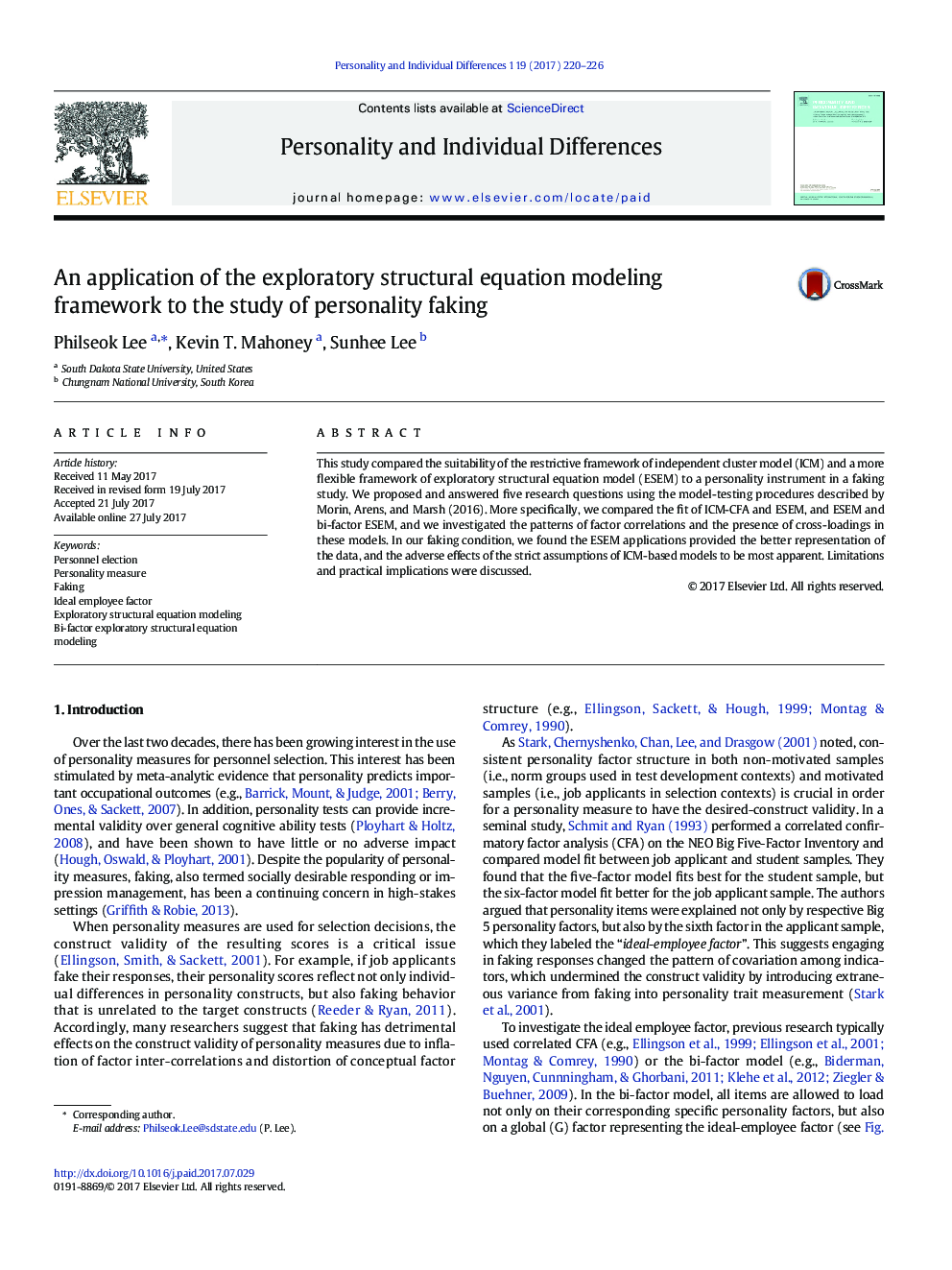| کد مقاله | کد نشریه | سال انتشار | مقاله انگلیسی | نسخه تمام متن |
|---|---|---|---|---|
| 5035676 | 1471999 | 2017 | 7 صفحه PDF | دانلود رایگان |
- More inflation of factor correlations manifested for the faking condition in ICM-CFA than ESEM.
- The model fit improvement of ESEM was more apparent in the faking condition.
- Cross-loadings are much more evident in the faking condition for ESEM.
- The ideal employee factor is more apparent under the faking condition than the honest condition when B-ESEM is applied.
- The variance for the ideal employee factor was inflated in the traditional bi-factor model as compared to ESEM.
This study compared the suitability of the restrictive framework of independent cluster model (ICM) and a more flexible framework of exploratory structural equation model (ESEM) to a personality instrument in a faking study. We proposed and answered five research questions using the model-testing procedures described by Morin, Arens, and Marsh (2016). More specifically, we compared the fit of ICM-CFA and ESEM, and ESEM and bi-factor ESEM, and we investigated the patterns of factor correlations and the presence of cross-loadings in these models. In our faking condition, we found the ESEM applications provided the better representation of the data, and the adverse effects of the strict assumptions of ICM-based models to be most apparent. Limitations and practical implications were discussed.
Journal: Personality and Individual Differences - Volume 119, 1 December 2017, Pages 220-226
